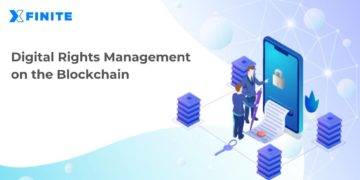As blockchain and Web3 technology gain recognition, digital rights management (DRM) will become more applicable to content creators. Blockchain united with Web3 allows content creators, and their fans, to have more control over how content is used, modified and distributed.
Content creators are always in danger of having their content monetized by others, using their content used by other creators without their permission, being demonetized for using content that violates the policy of hosting platforms, and getting kicked off content platforms for creating content the server platform deems to be incorrect at the moment.
IP Protection
Blockchain technology allows content creators the ability to have artistic control over how their material is viewed, dispersed, and monetized. They no longer need to fret about the unauthorized distribution of their information on the net and via file-sharing tools such as LimeWire or BitTorrent.
Web1 Vs. Web2 Vs. Web3
Web1 technology created the information economy on the internet, and enabled net users to read documents created on the computers of other users. During the maturation of Web1 we found that the growth of Yahoo and Internet Explorer with static front ends.
Then came the evolution of Web2 which enabled users to write and read on the internet from their home computers and individual devices. It allowed developers to produce beautiful and helpful front end applications. Web2 radically improved user experiences online by turning the information economy created by the Web1 revolution to some stage economy. Notable platform economy companies based on Web2 technologies comprise Facebook, Youtube, and WordPress.
Right now most of the world wide web is no longer predicated on Web1 technologies. Users expect to see great looking sites they can interact with that are created using Web2 technologies, rather than static web pages. However, in the long run users may expect to have Web3 functionalities over the sites and software they use.
The Token Economy
Web3 technology allows users to read, right, and perform code. It adds completely new functionality to the internet and is developing a new form of the internet economy called the token economy.
Web1 permitted information to be shared and read. Web2 enabled users to read and write files via sites (building on the functionality of Web2). Web3 allows users to read, write, and implement decentralized software applications made using blockchain technology via using tokens.
Near the end of the Web2 era, many net users began to be worried about how centralized the net had become. Web platforms such as Facebook, Google, Youtube, Twitter, and Wikipedia centralized and sold information created by its customers to their gains through the sale of personal information collected from countless millions of users using their platforms on a daily basis.
The token economy gives power back into the hands of the typical online user.
The token economy allows users to have the parts of both the network itself and the platforms built on top of the network, while also having more of a say concerning how these networks and platforms use their information. Web3 is in the process of creating an internet environment that’s focused on enabling its users rather than a Web2 business model focused on gathering users and promoting their own information.
Digital Rights Management OR Digital Rights Ownership?
The tokenization of internet platforms via blockchain combined with Web3 technologies is turning suspicious DRM policies driven by consumers and content creators by big tech firms such as Facebook and Youtube, right into questions of digital rights ownership that are determined by content creators and their viewers rather than giant corporations.
Tokenizing the user experience online through blockchain integration solves pressing problems surrounding Web2 platforms associated with censorship, monetization, digital piracy, and individual data collection.
Xfinite Puts Content Creators FIRST!
When content creators may set the policies surrounding how their content is used on Web3 platforms, for example Xfinite, it creates positive financial incentives for both content creators and their fans. The following Facebook or Google will probably be a Web3 platform built on top of blockchain technology offering a platform that gives users and creators more control over their content and user experience.
Xfinite is placing DRM at the top of the priority list, making it possible to see expansion in the coming years since they are prioritizing handling the content creators, and their fans, with respect whilst offering them new opportunities for the creation and consumption of digital media online.
Disclaimer: This is a sponsored press release, also will be for informational purposes only. It does not reflect the viewpoints of CryptoNewsDaily, nor is it intended to be utilized as legal, tax, investment, or financial information.























